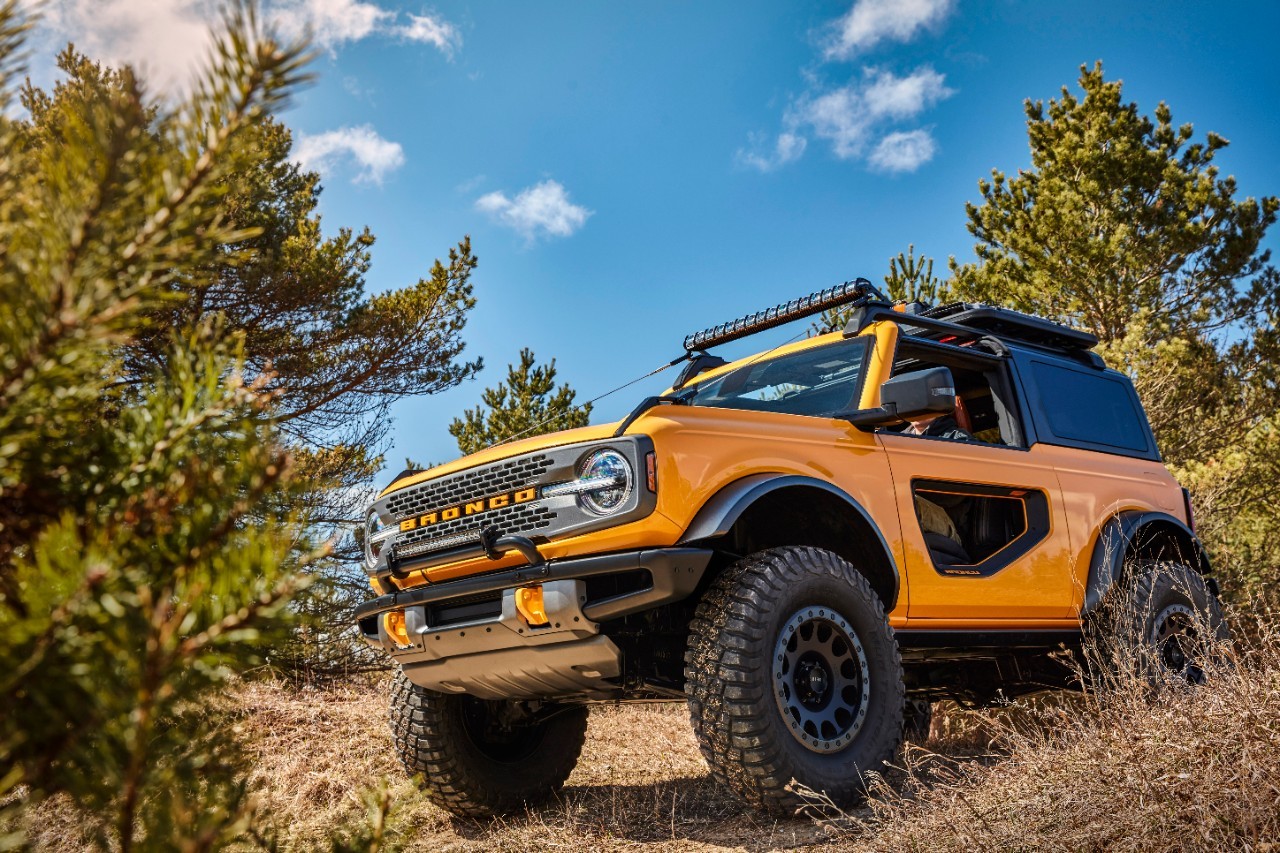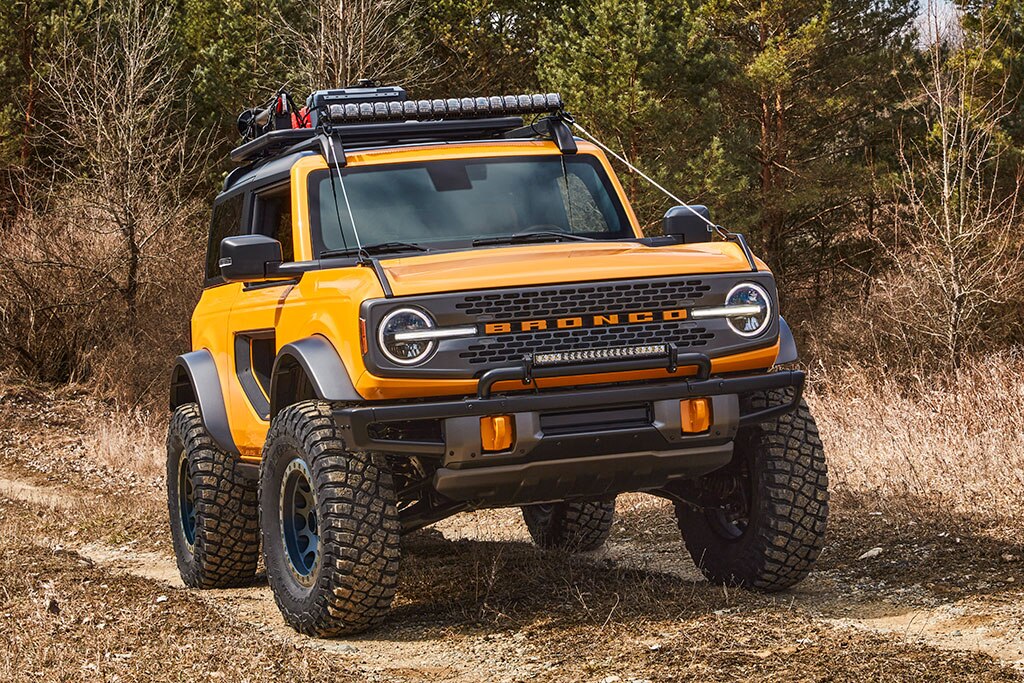
The differentials are produced by Dana, with the rear being a Dana 44, with standard AdvanTEK units and available Spicer Performa-TraK electronic locking units.Ĭost of entry for a 2021 Bronco is $29,995 for the two-door or $34,695 for a four-door (both those sums include a $1,495 destination charge). The standard system features a two-speed, electronic, shift-on-the-fly transfer case with a 2.72:1 low ratio, while the optional system has a 3:06:1 low ratio and adds a 4A mode that automatically goes between 2H and 4H when needed. Four-wheel drive is standard on every Bronco, but like Jeep, Ford offers different grades. Speaking of the automatic, its Ford's now-familiar 10-speed that's optional on the 2.3-liter and mandatory with the 2.7 liter.
2021 ford bronco mog manual#
The 2.3-liter can be had with a seven-speed manual transmission, which is really just a six-speed with a creeper gear offering a crawl ratio of 94.75:1 with the shortest available axle ratio the automatic can best achieve a ratio of 67.8:1, again with the optional axle. You can squeeze significant power out of both by filling with premium, but it's not required.

The 2.7-liter turbo V6 is good for 315 hp and 415 lb-ft of torque, which betters the 2.7 offered in the Ford F-150. The standard 2.3-liter inline-four, shared with the Ford Ranger, produces a stout 275 horsepower and 315 pound-feet of torque. There are two available engines, both of which are turbocharged. Also like the Jeep (but not the Land Rover), it’s a body-on-frame design. So far, Ford has avoided firewalling much equipment behind the larger four-door (a strategy illustrated by Jeep’s Wrangler 4xe and Rubicon 392, among others), so it’s really a matter of how much you’re willing to compromise on either comfort (two-door) or capability (four-door) to suit your lifestyle. Like the Wrangler and Land Rover Defender ( for now), the Bronco comes in two sizes: a short-wheelbase, two-door model and a longer four-door. We’ve covered the Bronco exhaustively since spy photos of early prototypes first appeared, but just in case you’ve been living under a rock (or need a refresher after an entire year), we’ll recap the items you really need to know. Look, there are only so many ways we can say “finally,” so we’ll spare you the snarky intro and get right to it. The most capable variant off the beaten path is expected to launch as a 2022 model at the earliest, with at least 400 horsepower on tap.A year ago, Jeep was put on notice with the official announcement of the 2021 Ford Bronco, poised to take the fight directly to the Wrangler. While on the subject of guzzling dinosaur juice, the Bronco will definitely take a hit if the Warthog levels up to the 3.0-liter EcoBoost and 37-inch rubber shoes. The least efficient Broncos average 17 miles per gallon (13.8 liters per 100 kilometers), which is 3 miles per gallon better than the Wrangler 392 with the free-breathing HEMI motor that cranks out 470 horsepower. Next up on the EPA’s website, the 2.7-liter EcoBoost is rated at 19 miles per gallon (12.4 liters per 100 kilometers), while the 2.3-liter EcoBoost in Black Diamond and Sasquatch trims can only muster 18 mpg (13.1 l/100 km).

An electric-only Bronco and a zero-emissions Ranger will follow suit on the Global Electrified 2 platform. As for those who are donning the mantle of CO2 awareness, fret not because the Blue Oval will launch a plug-in hybrid Bronco next year. But as long as gas remains affordable in the United States, don’t expect prospective customers to be swayed by the Ford Motor Company’s rival on fuel economy alone. Jeep can do much better, though, as long as you opt for the JLU-exclusive EcoDiesel V6 or 4xe plug-in hybrid.

For the sake of comparison, the JL and JLU Wrangler with the 2.0-liter turbo engine are good for 23 and 22 mpg (10.2 and 10.7 l/100 km). The most efficient Broncos for the 2021 model year are the Base, Big Bend, and Outer Banks with the 2.3-liter EcoBoost four-cylinder turbo and either transmission at 21 miles per gallon (11.2 liters per 100 kilometers) combined.


 0 kommentar(er)
0 kommentar(er)
